Kodiak bear (Ursus arctos middendorffi) is a subspecies of brown bear (Ursus arctos). They inhabit the islands of the Kodiak Archipelago in southwest Alaska. They look like grizzly bears, however, they are significantly larger. Here are 15 amazing Kodiak bear facts.
Kodiak Bear Facts
1. The Kodiak bear is the largest brown bear in the world
The Kodiak bear is the largest recognized subspecies or population of the brown bear. Furthermore, along with the mighty polar bear, it is one of the two largest bear species alive today.
The weight of females (sows) is between 181 and 318 kg (399 to 701 lb), and males (boars) can be from 272 to 635 kg (600 to 1,400 lb).
The largest recorded wild male Kodiak bear weighed 751 kg (1,656 lb) which is on display in Anchorage Airport, Alaska.
Captive bears can weigh even more: the largest verified size for a captive Kodiak bear was for a male specimen Nicknamed “Clyde” that lived at the Dakota Zoo in Bismarck, North Dakota. The giant bear weighed 966 kg (2,130 lb) when he died in June 1987 at the age of 22. He weighed close to 1,089 kg (2,400 lb) one year before his death.
When standing fully upright on its hind legs, a large male could reach a height of 3 meters (9.8 feet).
The largest Kodiak Bear ever recorded: Anchorage Airport Brown Bear
The largest Kodiak Bear ever recorded is the famous 1700-pound (771 kg) world record brown bear which is on display in Anchorage Airport, Alaska.
It is also the biggest brown bear ever recorded. It stands about 10 feet (3.05 meters) tall, standing on its hind legs.
Reportedly, the giant bear was killed by a forestry worker. But, the Alaska Fish and Wildlife Commission did not reveal his name.

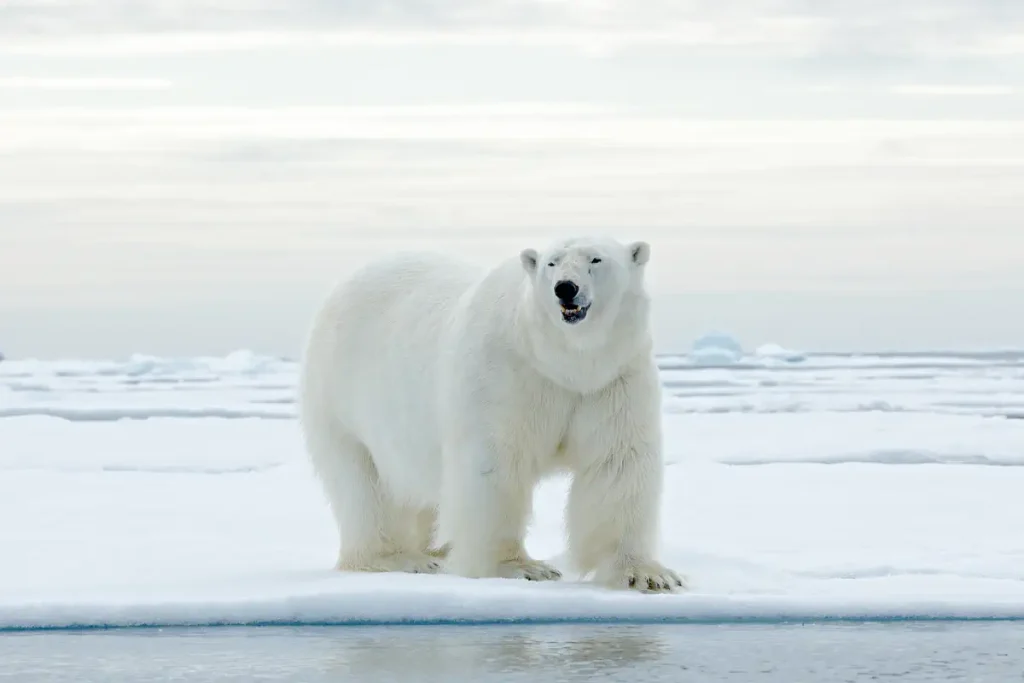
Related: 20 amazing Polar Bear facts
2. It is also the largest terrestrial carnivore on Earth
Polar bears are classified as marine mammals rather than terrestrial (land-living) mammals because of their dependency on sea ice. This classification makes the Kodiak bear the largest terrestrial carnivore in the world.
3. Kodiak bears are very close relatives of the Grizzly bears
Some experts do not accept them as different species – Kodiak bears are just grizzly bears living on Kodiak Island, according to them.
Some scientists, on the other hand, think that Kodiak bears (Ursus arctos middendorffi) and grizzlies (Ursus arctos horribilis) are part of the same species of brown bear, though they are different enough to constitute two subspecies.
The main difference is where they live. The range of the Kodiak is limited to just the islands of the Kodiak archipelago of southwestern Alaska. Grizzly bears, on the other hand, are much more widespread; they’re generally found in inland areas of the Canadian provinces of the Northwest Territories, Yukon, British Columbia, and Alberta, and the U.S. states of Alaska, Montana, Washington, Wyoming, and Idaho.
The geographic differences between these two subspecies have also led to differences in size. Generally, Kodiak bears live in a food-rich area, they have a larger bone structure, and therefore larger frames than grizzly bears, though both species can reach very large sizes.
There is also no interbreeding between the Kodiak bears and the inland grizzlies.
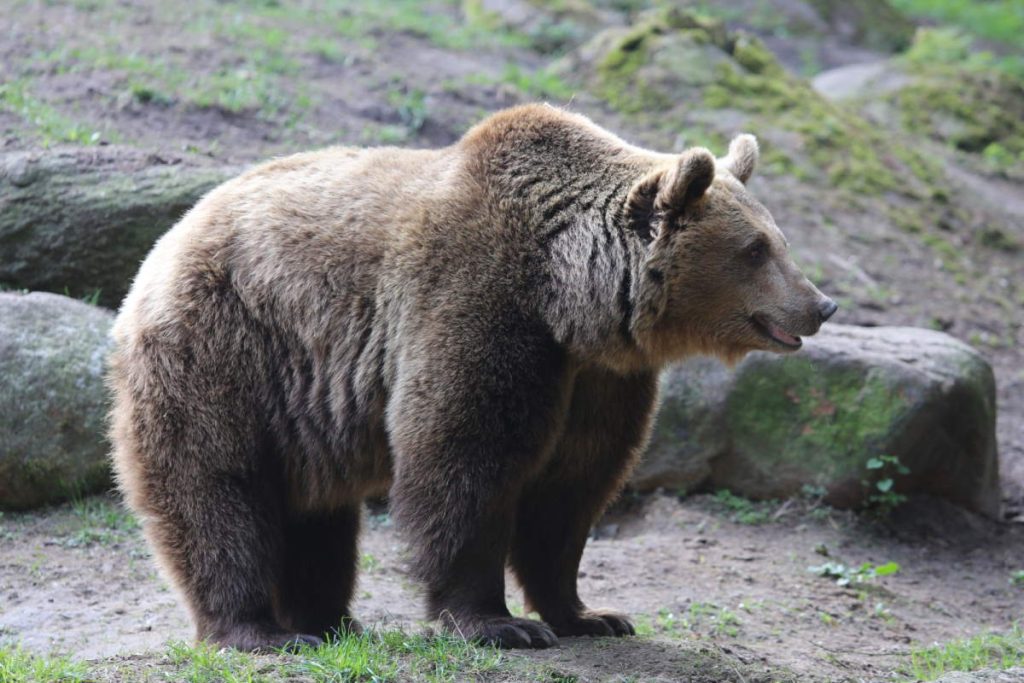
4. They are also relatives of the Asian brown bear
Genetic analyses show that the Kodiak bear is related to brown bears both on the Alaska Peninsula and the Kamchatka Peninsula in far eastern Russia. The Kamchatka brown bear is almost as big as the Kodiak bear.
However, the analysis also suggests that the Kodiak bears have been genetically isolated since the last ice age, which means for at least 10,000-12,000 years.
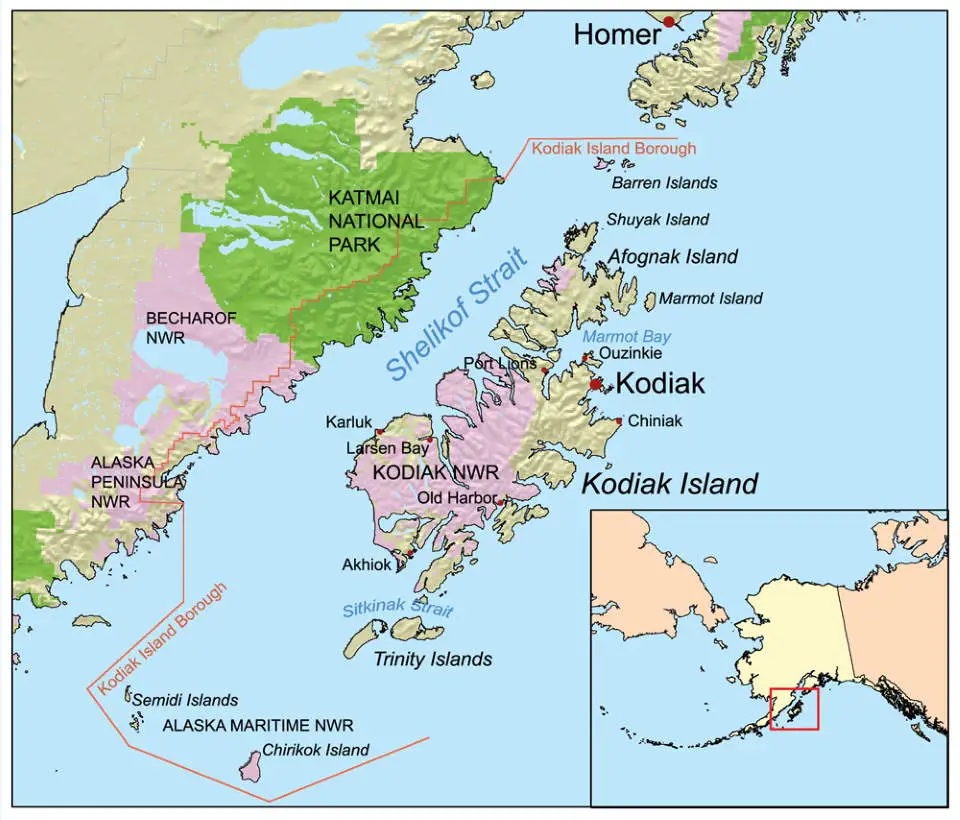
5. Kodiak bears can be in many different colors
Their hair color ranges from blonde to orange to dark brown. Cubs often retain a white “natal ring” around their neck for the first few years of life.
6. They live up to 25 years
In the wild, they live around 20-25. The oldest recorded male (boar) in the wild was 27 and the oldest female (sow) was 35.
They reach sexual maturity around age 5, but most females (sows) are over 9 years old when they successfully give birth.
Cubs leave their mothers when they are around 3-5 years old, but their survivability rate is not great: only 56% of males and 89% of females survive.
7. Kodiak bears are more social than other bears
They are generally solitary in nature, like other bears and predators. But, since they live in a relatively small and isolated area, they can create large dense groups in areas that are rich in food. Because of this, they are more social than other bears and, according to the Alaska Department of Fish and Game, they have developed a complex language and social structure to express their feelings and avoid fights.
8. They are usually diurnal (active during the day)
Kodiak bears are usually diurnal, which means they are active during the day. But, if they face competition for food or space, they can adopt a more nocturnal (active at night) lifestyle.
9. Kodiak bears are omnivores
Despite its massive size and reputation as a fierce predator, the Kodiak bear is generally an opportunist and will eat a large variety of plant and animal species.
But, like pandas, they have the digestive system of a carnivore, so they are classified as Carnivora, despite plants making up a large portion of their diet.
10. They are not as territorial as grizzly bears
Despite their huge size, Kodiak bears are not very territorial and they usually do not defend their territories as aggressively as grizzly bears. This is probably due to two main reasons:
- They live in a small area, so their territory overlaps, and
- Food is abundant where they live.
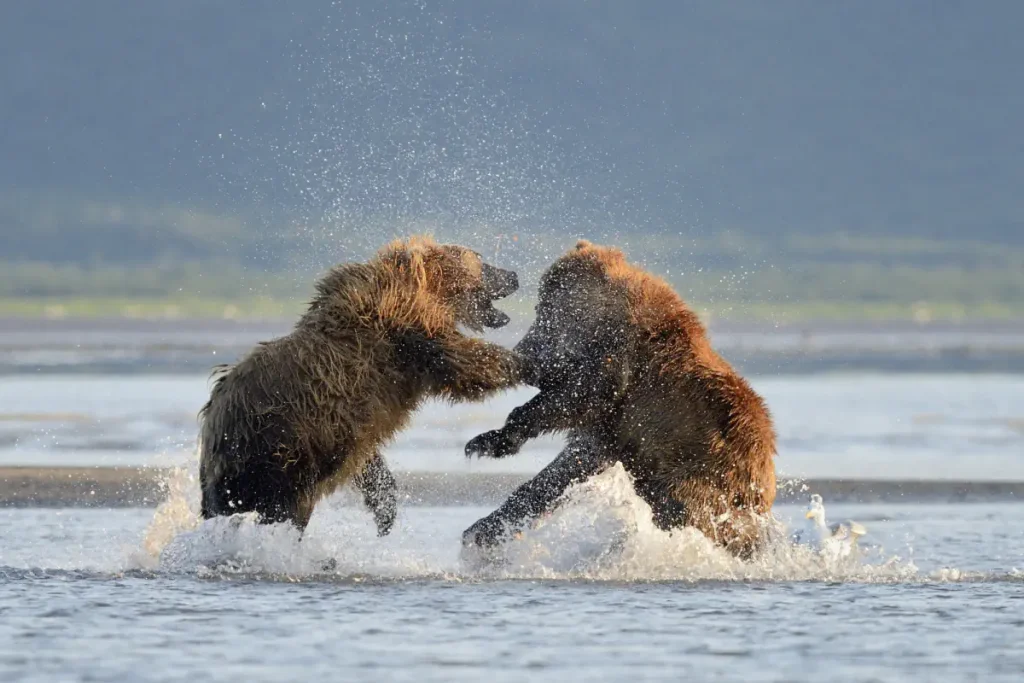
Related: 20 Amazing Grizzly Bear Facts
11. Kodiak bear populations are healthy and productive
They enjoy a relatively pristine habitat and food is abundant. They are not listed as an endangered species by the Endangered Species Act of the U.S. Fish and Wildlife Service.
Today, their estimated population exceeds 3,500 individuals and the population seems to be slowly increasing.
There are still possible threats, though: effects of global warming upon salmon populations which are the main protein and fat resources of the bears, energy development projects and associated road-building, and increasing human activity in the area which increase the likelihood of human-bear conflicts, are the main threats.
Furthermore, although the current population is healthy and productive, and has shown no overt adverse signs of inbreeding, there is very little genetic diversity exists within the Kodiak bear population. This may be making their population more susceptible to new diseases or parasites than other, more diverse brown bear populations.
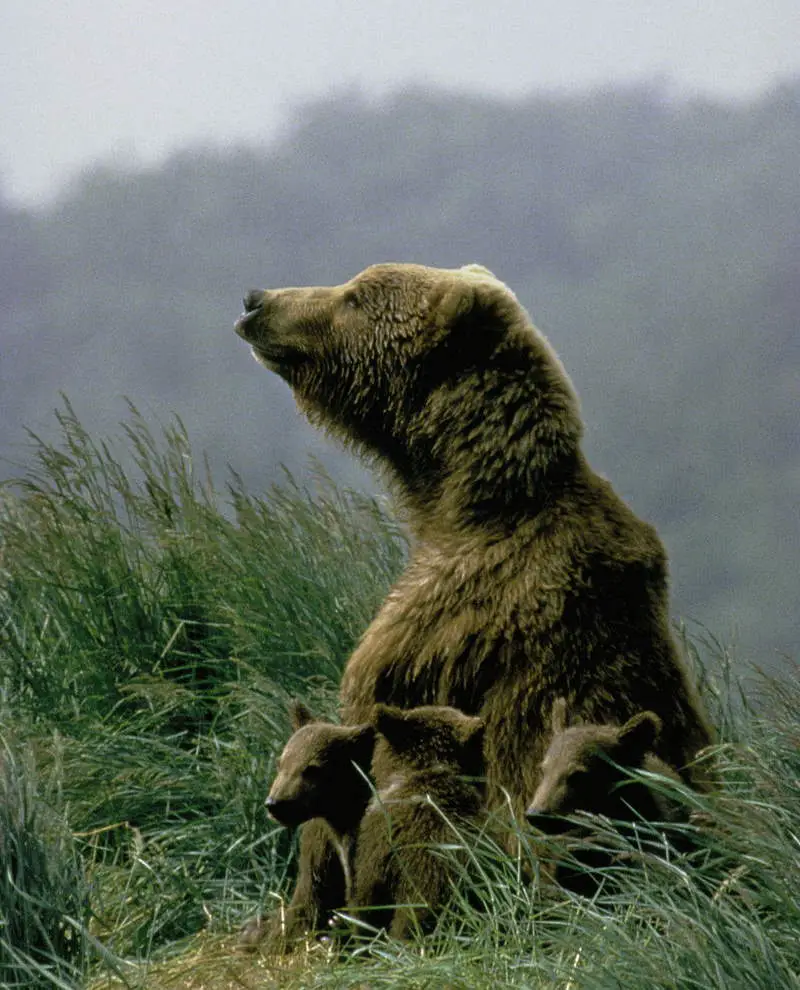
12. They do hibernate
Kodiak bears begin entering their dens in late October. Pregnant sows are usually the first to go to dens; males are the last. Males begin emerging from their dens in early April, while sows with new cubs may stay in dens until late June.
Individuals living on the north end of Kodiak Island tend to have longer denning periods. Most Kodiak bears dig their dens in hills or mountainsides. Almost 25 percent of the adult bears, almost always males, forgo denning, staying somewhat active throughout the winter.
Between the spring-summer time when they leave hibernation and the fall, their weight can increase by more than 50 percent.
13. Kodiak bear paws are huge!
A 700-pound (318 kg) Kodiak bear, which is an average-sized individual could have a front paw that is 13” (33 cm) across.
14. There was a famous Kodiak bear named “Bart the Bear”
Bart the Bear was a huge male Kodiak bear. He is best known for his appearances in Hollywood films, including The Bear (for which he received widespread acclaim), White Fang, Legends of the Fall, and The Edge.
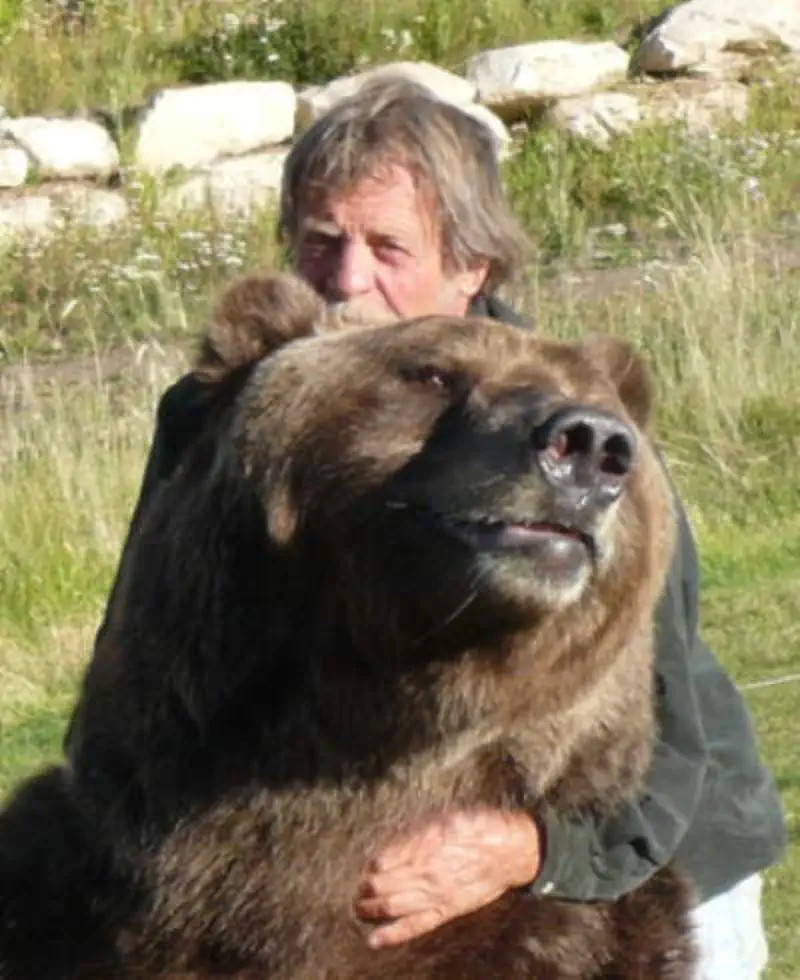
Bart was trained by animal trainers Doug and Lynne Seus of Wasatch Rocky Mountain Wildlife, Inc., in Heber City, Utah.
He was born on January 19, 1977, and died on May 10, 2000, at age 23. He was 9′ 6″ (2.90 meters) tall and weighed 1,500 pounds (680 kg).
15. Usually Kodiak bears do not attack people
Kodiak bears usually attempt to avoid encounters with people. In the past 100 years, only one person has been killed by a bear on Kodiak Island – the incident occurred in 1999 and he was a bear hunter. Prior to that, the last fatality was in 1921, also a bear hunter. On average, once every other year a bear injures a person.
16. Bear viewing is a popular tourist activity
In recent years, bear viewing has become increasingly popular on Kodiak Island and other parts of Alaska. It can have serious impacts on bear populations if it is not conducted properly, though. According to Wikipedia, “most viewing occurs at places where bears congregate because of feeding opportunities that are critical to their survival. If some bears avoid these areas because people are there, those bears may not get the fat and protein they need to make it through the upcoming winter. Consequently, unmanaged bear viewing could affect several bears, especially productive sows with cubs”.

Sources
- Kodiak bear on Wikipedia
- Kodiak Bear Fact Sheet on the Alaska Department of Fish and Game website
- Kodiak Bear Facts and Beyond on the Biology Dictionary website
- Kodiak bear on the Bear Conversation website
- Bart the Bear on Wikipedia
- How do Kodiak and grizzly bears differ? on Quora
- How Many Elephants are Left in the World in 2025? - August 17, 2025
- Moon Landings: All-Time List [1966-2025] - February 2, 2025
- What Is Max-Q and Why Is It Important During Rocket Launches? - January 16, 2025
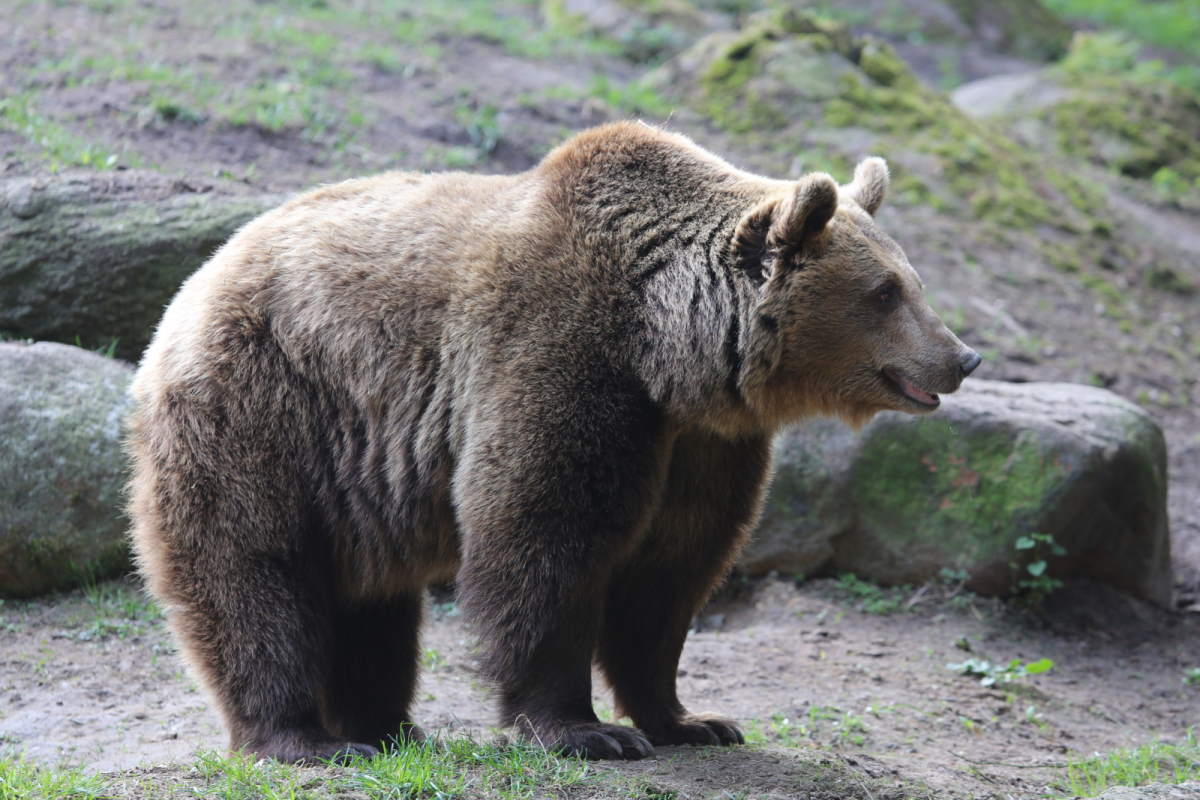
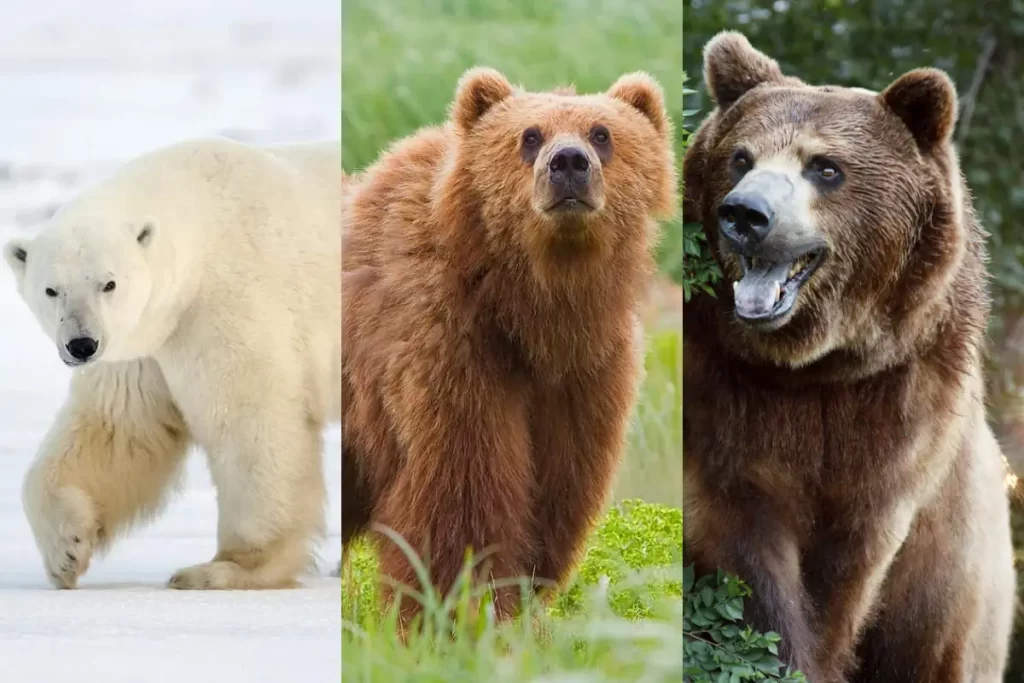

One reply on “The Largest Kodiak Bear Ever Recorded [and 16 Amazing Kodiak Bear Facts]”
There was a Grizzly bear recorded in Valley Center, California that weighed in at over 2200 pounds and it is showcased in a little museum in Valley center. It’s stuffed and you can go see it there for proof. That is a big bear wow but it was a grizzly and we have no grizzlies here anymore because they were wiped out by the humans and so now they’re trying to bring them back from British Columbia and Yosemite. It’s the closest to what we had and they want to bring them back for, I’m assuming the ecosystem.